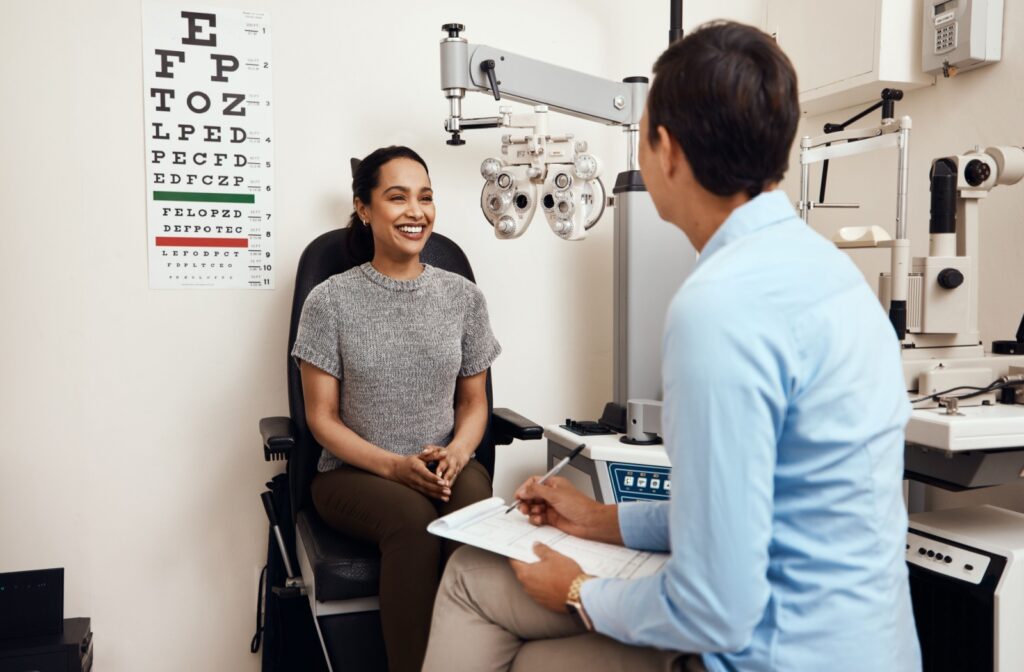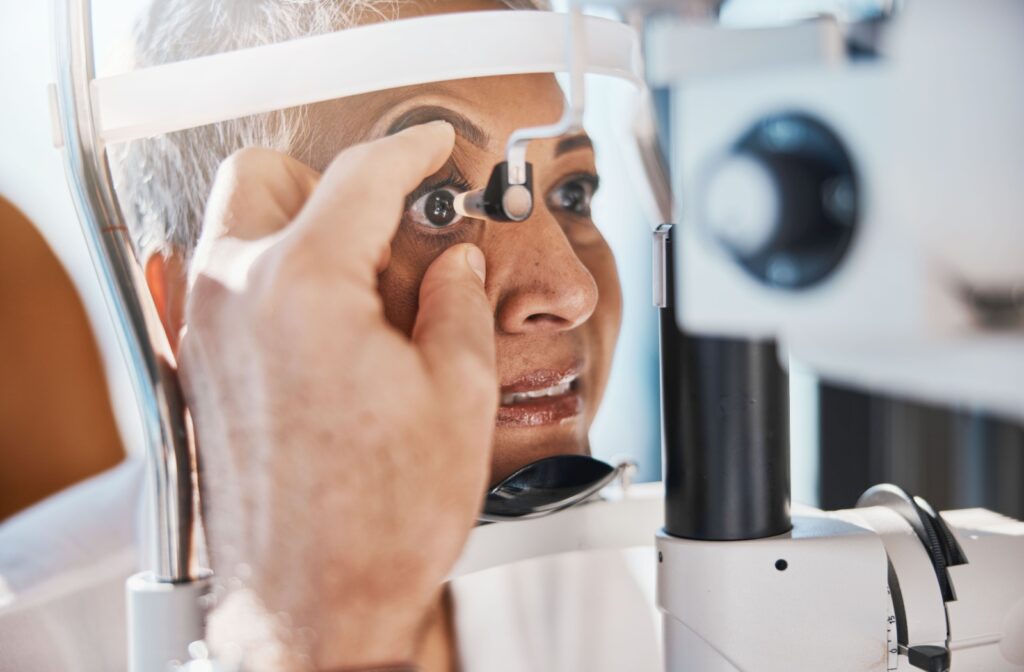You share many things with your family, from your smile to your sense of humour. Sometimes, you may also share a risk for certain health conditions. One such condition is glaucoma, a group of eye diseases that can damage the optic nerve and may lead to vision loss over time.
Glaucoma often has a strong hereditary link, meaning it can run in families. Knowing your family’s eye health history is a key step in protecting your own sight.
The Family Connection & Your Glaucoma Risk
If a close relative, like a parent or sibling, has glaucoma, your risk of developing it can be significantly higher than someone with no family history. This genetic predisposition doesn’t mean you’ll inevitably get glaucoma, but it does make awareness and regular check-ups more important. Understanding this link can empower you to take proactive steps for your vision.
How Glaucoma Is Inherited
Glaucoma can be passed down through genes from either of your parents. Certain genes influence your eye’s internal pressure and the structure of your optic nerve. When mutations occur in these genes, they can increase the likelihood of developing the disease.
Think of it as inheriting a higher chance, not a definite outcome. Many factors contribute to the development of glaucoma. Your genetics are just one piece of a larger puzzle.
Talk to Your Family & Your Doctor
Open communication is a powerful tool for your health. If you receive a glaucoma diagnosis, let your close relatives know so they can get checked. This information can help them protect their vision, too.
Likewise, you should share your family’s eye health history with your eye care team. A conversation with your eye doctor about your background helps them create a more complete picture of your personal risk. This allows them to recommend an appropriate schedule for your eye exams.
Types of Glaucoma with Genetic Links
Glaucoma isn’t just one condition—it’s a group of related eye diseases. Some members of this group have a stronger connection to your family tree than others. Knowing the different types can help you understand your risk more clearly.
Primary Open-Angle Glaucoma
This is the most common form of glaucoma. It develops slowly and painlessly, often without any early symptoms. A family history of primary open-angle glaucoma is one of the most significant risk factors for developing it yourself.
Angle-Closure Glaucoma
This type happens when the eye’s drainage angle becomes blocked, causing a rapid increase in eye pressure. This condition can also be hereditary, and it’s more common in certain populations.
Early-Onset Glaucoma
When glaucoma appears before age 40, it’s often tied directly to genetic factors. This category includes congenital glaucoma, which is present at birth. It also includes juvenile glaucoma, which develops in childhood or early adulthood.
First Signs of Glaucoma Development
One of the main challenges with glaucoma is that it often has no warning signs in its early stages. The vision loss can be so gradual that you might not even notice a change until the condition is more advanced. This is why glaucoma is sometimes called the “silent thief of sight.”
When symptoms do appear, they can affect your vision in specific ways. You may notice:
- Gradual loss of your peripheral, or side, vision
- Tunnel vision in the more advanced stages
A sudden and severe form of glaucoma, acute angle-closure glaucoma, can cause more immediate symptoms. These can include intense eye pain, nausea, and blurry vision. This situation requires prompt attention.
Who Else Has a Higher Risk?
Your family history is just one piece of the puzzle. Several other factors can increase your likelihood of developing glaucoma. It’s helpful to be aware of these other contributors to your overall risk profile.
Your Age & Ethnicity
The risk for glaucoma increases as you get older, particularly after age 60. Your ethnic background also plays a role in your potential risk.
Other Health Factors
Certain health conditions and past events can also affect your risk for glaucoma. These factors can put extra stress on your eyes or optic nerve. Some common contributors include:
- High internal eye pressure
- A previous serious eye injury
- Medical conditions like diabetes or high blood pressure
- Long-term use of steroid medications
- Being very nearsighted or farsighted
How to Protect Your Vision
You can’t change your genes, but you can take proactive steps to care for your eyesight. Since you can’t prevent hereditary glaucoma, early detection is the best defence against significant vision loss. Consistent monitoring can make all the difference.

The Role of Regular Eye Exams
A comprehensive eye exam is a straightforward and painless way to check your eye health. These exams allow your optometrist to perform a number of diagnostic tests to assess the health of your eye and optic nerve in order to identify signs of glaucoma before you notice any changes in your vision.
If you have a family history or other risk factors, routine check-ups are a key part of your health care.
What to Expect with Treatment
If we identify glaucoma early, treatment can help slow its progression and save your remaining vision. Common treatments include prescription eye drops that help lower the pressure inside your eye. In some cases, other procedures may be recommended.
The main goal of treatment is to manage the condition and prevent further damage to the optic nerve. We can work with you to find a treatment plan that fits your lifestyle. Your active participation is an important part of successfully managing the condition. Understanding your genetic risk is the first step toward protecting your vision for years to come. If you have questions about your family history or want to schedule an eye exam, our team at Doctors EyeCare Grande Prairie is here to help. Contact us today to book your appointment.




